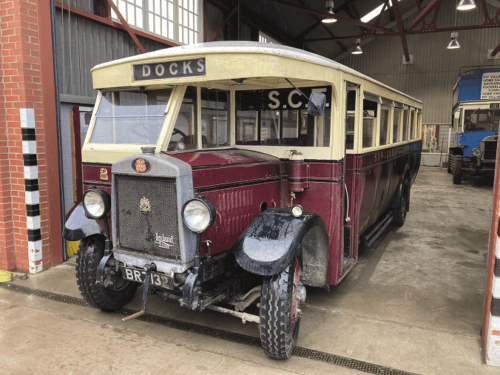
Nick Larkin reports on a North East bus which has returned home after a nomadic life
A 1929 Sunderland Corporation Leyland Lion single-decker has returned to the North East some 80 years after it left. BR 7132 is now a member of the historic fleet at Beamish Museum in County Durham.
The Leyland Lion design first appeared in 1925 and marked a significant step-change in bus design – moving from what were essentially adapted goods vehicle chassis, to a design that was tailored to carry passengers. Following use by Sunderland Corporation, no. 2 was sold to a Hull dealer who exported it to Jersey in the 1930s. The bus was requisitioned by the occupying Germans in World War Two and later passed to Jersey Motor Transport, where it worked until 1959.
[wlm_nonmember][…]By subscribing you will benefit from:
- Operator & Supplier Profiles
- Face-to-Face Interviews
- Lastest News
- Test Drives and Reviews
- Legal Updates
- Route Focus
- Industry Insider Opinions
- Passenger Perspective
- Vehicle Launches
- and much more!
Pioneer preservationist Michael Plunkett bought the Leyland and returned it to Sunderland specification. Latterly based at Amberley Museum, in the ownership of the Southdown Omnibus Trust, it has now been transferred to Beamish. A spokesperson said: “We’re thrilled to welcome Sunderland Corporation Leyland Lion bus no. 2 to the Beamish Transport fleet. No. 2 requires mechanical, electrical and body repairs before entering service at the museum but it will be on display in the bus depot for visitors to view in the meantime.”

Lion king
The Leyland Lion design first appeared in 1925 and marked a significant step-change in bus design – moving from what were essentially adapted goods vehicle chassis, to a design that was tailored to carry passengers. This included the lowering of the main chassis rails to achieve a lower floor, with the distinctive upward sweep of the chassis over the rear axle and underneath the engine. The first Lions were designated ‘LSC’ (with the prefix ‘P’ to denote their passenger-use intent) and were in production from 1925 to 1929. The type was enormously successful and with some 3,000 examples built, evolution saw the introduction of the LT1 range (fitted with a four-cylinder petrol engine and intended for stage work). Production lasted from 1929 to 1933, evolving to include LT2, LT3 and LT4 variants.
Sunderland Corporation’s operation of the type began with vehicles and crews hired from the Northern General Transport on a route serving the local docks. In 1929 a batch of 12 Leyland Lion LT1s with Leyland front-entrance 32-seat bodies arrived, of which no.2 was one.
[/wlm_ismember]

